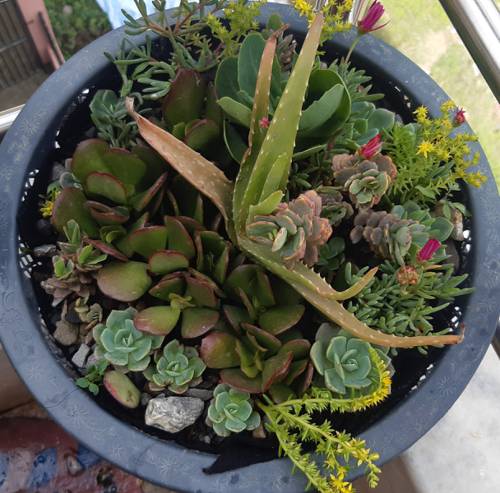
FAQ About Indoor Plant Carbon Allocation Patterns

What is carbon allocation in indoor plants?
Carbon allocation in indoor plants refers to the process by which plants distribute assimilated carbon (from photosynthesis) to different parts of the plant such as leaves, roots, stems, and storage tissues. This process is essential for growth, development, and survival, as it determines how the plant prioritizes its resources for functions like growth, reproduction, and maintenance.

How does carbon allocation affect plant growth?
Carbon allocation influences plant growth by determining which parts of the plant receive more resources. For instance, if more carbon is allocated to leaves, the plant might enhance its photosynthesis capacity, whereas allocation to roots could improve its nutrient uptake. Balancing carbon allocation is critical for optimal growth and adaptation to environmental changes.

Why is photosynthesis efficiency important for indoor plants?
Photosynthesis efficiency is crucial for indoor plants because it directly impacts their ability to produce energy and grow. High photosynthesis efficiency ensures that plants maximize the light available, converting it into chemical energy with minimal wastage. This is particularly important indoors, where light levels can be lower compared to outdoor environments.

How can I improve carbon allocation in my indoor plants?
Improving carbon allocation involves optimizing growing conditions such as light, water, and nutrients. Providing adequate lighting, ensuring proper watering schedules, and using suitable fertilizers can help. Pruning can also direct more resources to desired parts of the plant, improving overall growth and health.

Do different plants have different carbon allocation patterns?
Yes, different plants have evolved varying carbon allocation patterns based on their environment and lifestyle. Some species might prioritize leaf growth to increase photosynthesis, whereas others might focus on root development to enhance nutrient absorption. Understanding these patterns can help in tailoring care practices for different plants.

What role do roots play in carbon allocation?
Roots are crucial in carbon allocation as they are responsible for absorbing water and nutrients. Allocating carbon to roots can enhance a plant's ability to uptake necessary resources from the soil, support anchorage, and store carbohydrates, which can be vital for the plant's survival during adverse conditions.

How does lighting affect carbon allocation in indoor plants?
Lighting significantly impacts carbon allocation as it influences photosynthesis. Under low light conditions, a plant may allocate more carbon to growing larger leaves to capture more light. However, with optimal lighting, the carbon allocation can be balanced between leaves, stems, and roots to promote overall health and growth.

Can stress factors alter carbon allocation patterns?
Yes, stress factors such as drought, nutrient deficiency, or pests can affect carbon allocation patterns. Under stress, plants may shift their allocation from growth to maintenance or defense, such as producing secondary metabolites to deter pests. Understanding these shifts is critical for managing plant health under challenging conditions.

What is the relationship between carbon allocation and nutrient uptake?
Carbon allocation and nutrient uptake are interrelated because carbon-based compounds in roots help in the absorption and transportation of nutrients. Efficient carbon allocation ensures that roots receive adequate resources to develop properly, enhancing the plant's overall nutrient uptake capacity.

How do indoor environmental conditions influence carbon allocation?
Indoor environmental conditions, such as temperature, humidity, and air circulation, can significantly influence carbon allocation by affecting a plant's metabolic rates. Stable conditions can promote balanced carbon distribution, while fluctuating environments might disrupt allocation patterns, affecting growth.

Why is it important to balance carbon allocation in houseplants?
Balancing carbon allocation is essential for maintaining a healthy growth equilibrium in houseplants. Improper allocation can lead to excessive growth of one part, such as stems, at the expense of others, like roots or leaves, potentially leading to structural weaknesses or reduced photosynthesis capacity.

What are some signs of poor carbon allocation in indoor plants?
Signs of poor carbon allocation include uneven growth, such as excessively tall or leggy plants, yellowing leaves, stunted growth, and poor root development. Identifying these symptoms can help gardeners adjust care strategies to correct allocation imbalances.

How does water availability affect carbon allocation?
Water availability affects carbon allocation since water stress can cause plants to prioritize carbon to root growth for better water absorption. Conversely, with adequate water, plants can afford to allocate more carbon to leaves and stems, fostering overall growth.

Are there specific indoor plants known for efficient carbon allocation?
Certain indoor plants like succulents and epiphytes are known for efficient carbon allocation, as they have adaptations that optimize resource use in their native environments. For example, succulents store water and nutrients in their tissues, allowing them to survive in low-resource conditions.

How can pruning influence carbon allocation?
Pruning can influence carbon allocation by redirecting resources from cut areas to other parts of the plant. This can lead to increased growth in desired areas, such as encouraging bushier foliage or stronger root development. Proper pruning techniques can therefore enhance plant health and aesthetics.

What is the impact of carbon allocation on a plant’s survival during stress?
During stress, strategic carbon allocation is crucial for survival. Plants may allocate more resources to maintenance and defense rather than growth, enabling them to withstand adverse conditions such as drought or pest infestations until normal conditions resume.

How does temperature affect carbon allocation in indoor plants?
Temperature influences metabolic rates, which can alter carbon allocation patterns. At optimal temperatures, plants efficiently manage their carbon resources. However, extreme temperatures can disrupt these patterns, leading to inefficient resource use and potential growth issues.

Is there a relationship between plant age and carbon allocation?
Yes, plant age can affect carbon allocation, as young plants typically allocate more carbon to shoot and root growth to establish themselves, whereas mature plants may focus on reproductive structures like flowers and seeds. Understanding this can inform better care practices tailored to a plant's age.

What techniques do plants use to optimize carbon allocation?
Plants use various techniques to optimize carbon allocation, including structural adaptation, physiological changes, and biochemical pathways. For example, some plants may change their leaf angle to improve light absorption or adjust stomatal opening to regulate gas exchange based on environmental conditions.

Can soil conditions influence carbon allocation in indoor plants?
Yes, soil conditions can significantly influence carbon allocation. Factors such as soil nutrient content, pH, and texture affect root development and, consequently, the plant’s ability to allocate resources efficiently. Ensuring suitable soil conditions can support optimal carbon distribution and enhance plant growth.
